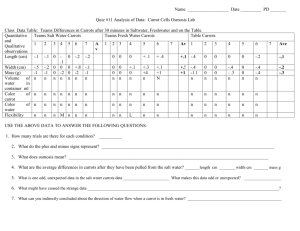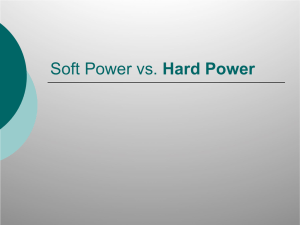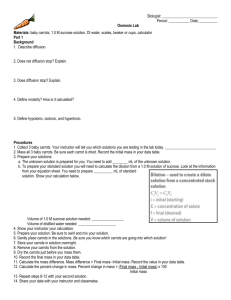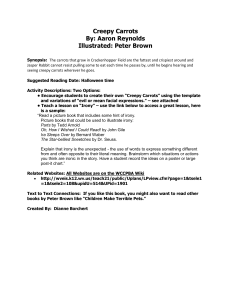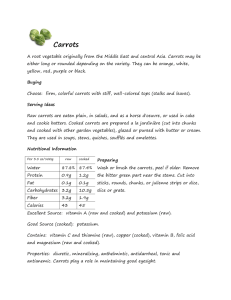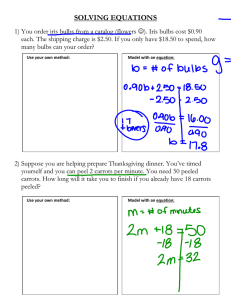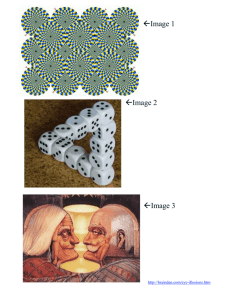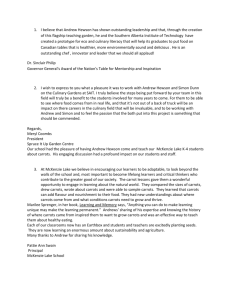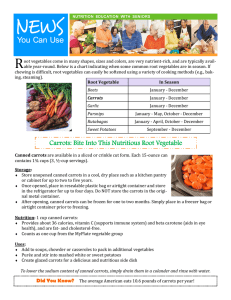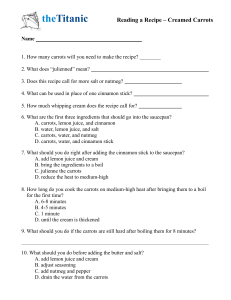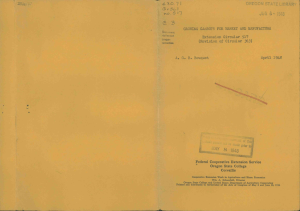REPORT COPY
advertisement
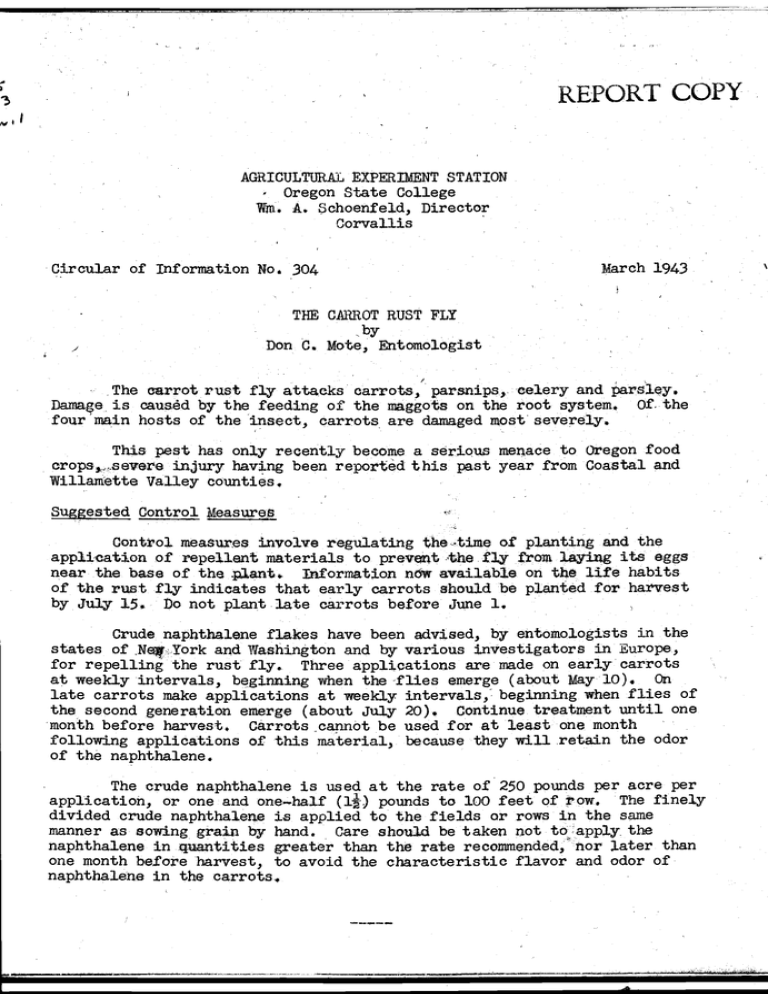
REPORT COPY AGRICULTURAL EXPERIMENT STATION Oregon State College Wni. A. SchoeiZeld, Director Corvallis March 1943 Circular of Information No1 304 THE CJRROT RUST FLY ..by Don C. Mote, Entomologist The carrot rust fly attacks carrots, parsnips, celery and pár1ey. Dae is caused by the feeding of the maggots on the root system. Of. the four main hosts of the insect, carrots are damaged most severely. This pest has only recently become a serious menace to Oregon food crops, severe injury having been reported this past year from Coastal and Willaxnette Valley counties. Suggested Control Measure Control measures involve regulating the 4irne of planting and the applioation of repellent materials to prevent the fly from laying its eggs Information now available on the life habits near the base of the p1ant of the rust fly indicates that early carrots should be planted for harvest byJuiy 15. Do not plant late carrots before June 1. Crude naphthaiene flakes have been advised, by entomologists in the states of Ne York and Washington and by various investigators in Europe, for repelling the rust fly.. Three applications are made on early carrots at weekly intervals, beginning when the f1ies emerge (about May10). late carrots make applications at weekly intervals,1 beginning when flies of Continue treatment until one the second generation emerge (about July 20). month before harvest. Carrots carmôt be used for at least one month following appliôations of this material,. because they will retain the odor of the naphthalene. The crude naphthalene is used at the rate of 250 pounds per acre per application, or one and one-half (1) pounds to 100 feet of row. The finely divided crude naphthalene is applied to the fields ox' rows in the same Care should be taken not to apply the manner as sowing grain by hand naphthalene in quantities greatr than the rate recommended, nor later than one month be.foe harvest, to avoid the characteristic flavor and odor of naphthaiene in the carrots..
